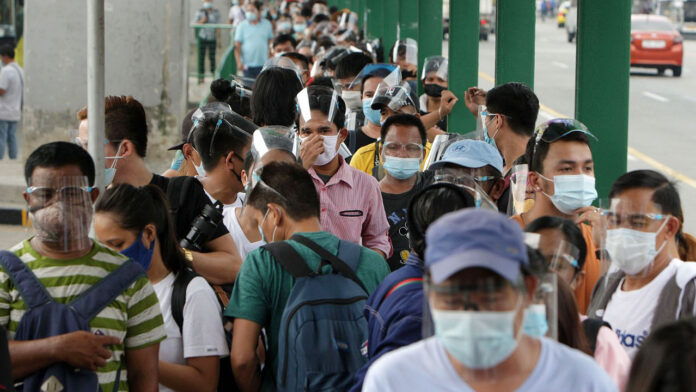THE REPRODUCTION rate of the coronavirus in the capital region has declined but remains critical, according to researchers from the country’s premier university.
The number had fallen to 1.53 from 1.78, the OCTA Research Group said in a report on Wednesday. Metro Manila had a daily average of 4,019 coronavirus cases from Aug. 18 to 24, 13% higher than a week earlier.
The Department of Health (DoH) reported 13,573 coronavirus infections on Wednesday, bringing the total to 1.88 million.
The death toll rose to 32,492 after 228 more patients died, while recoveries increased by 15,820 to 1.73 million, it said in a bulletin.
There were 125,378 active cases, 95.9% of which were mild, 1.3% did not show symptoms, 1.2% were severe, 0.94% were moderate and 0.6% were critical.
The agency said 176 cases had been removed from the tally, 174 of which were tagged as recoveries. It added that 152 recoveries had been reclassified as deaths. Seven laboratories failed to submit data on Aug. 23.
“Several local government units in the National Capital Region had decreasing reproduction numbers and growth rates,” OCTA said.
In Navotas, the reproduction number fell to less than 1.4. The numbers in Pasay, Malabon, Manila, Quezon City, Makati, and Las Piñas were less than 1.5 and their growth rates were below 20%.
Pateros, San Juan, Taguig, Mandaluyong, and Caloocan had reproduction numbers higher than 1.7.
Still, almost all metro cities except Navotas had critical reproduction rates, OCTA said. Only Manila, Quezon City, Caloocan and Marikina were below critical.
OCTA said the intensive care unit (ICU) occupancy for coronavirus patients in Metro Manila was high at 74%, while 67% of hospital beds for coronavirus patients were occupied.
ICU occupancy was at critical levels in San Juan, Muntinlupa, Parañaque, Las Piñas and Marikina, while it was high in Makati, Taguig, Pasay, Pasig, Valenzuela and Quezon City. — Kyle Aristophere T. Atienza

